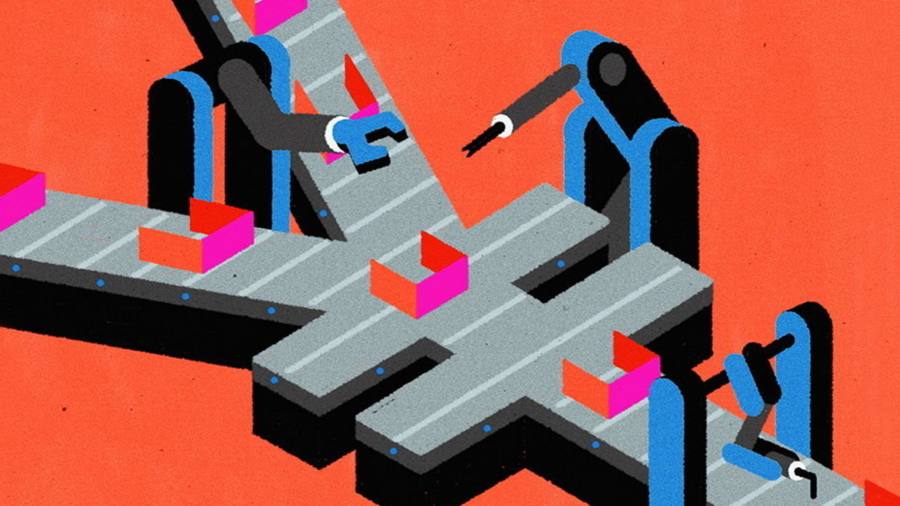
After months of defying forecasts, the yen ended last week with a near vertical plunge under its belt and the glint of more craziness to come. The Japanese authorities have opened their playbook to the page on fake intervention. A glut of central bank announcements next week looks sure to revive the turmoil.
It may be a difficult time to be a forex analyst, but it looks like a brilliant moment to be a Japanese robot.
The yen’s sharp plunge against the dollar this year has highlighted some pressing questions around Asia’s largest developed economy. Japan is a resource-poor country that imports most of its energy, food and raw materials; it has let wages stagnate for two decades and must now protect a shrinking and ageing population that has largely forgotten the pain of inflation; its corporations have moved almost 40 per cent of their manufacturing capacity overseas since 1995, blurring the picture of whether a weak yen is fundamentally good or bad for industry.
But these uncertainties increasingly look like factors pushing Japan much more decisively to the brink of its next robot revolution — an even more wholehearted embrace of automation that could serve as a model (or, if fumbled, a warning) for South Korea, China and other economies where labour markets seem destined to tighten indefinitely.
The simplest line of argument lies in the exchange rate itself: not the headline lows that the yen has plumbed in recent weeks, but the 50-year low at which the yen’s real effective exchange rate (a trade-weighted rate adjusted for inflation) now stands.
Economics suggest that this dirt cheapness should be a trigger for Japanese companies to bring production back onshore. There is already evidence of such moves: several clothing manufacturers have said recently they will bring production of high-end products home because of the weak yen. Japanese companies are jointly investing with the Taiwanese chipmaker TSMC in a $7bn plant in southern Japan that has become a poster child for reshoring in the weak yen era.
The hurdle that any such plans encounter is the minuscule spare capacity in Japan’s labour market. The only way to make such a project work is if it is built to operate with an absolute minimum of human staff.
In theory at least, this implies a bonanza for the factory automation specialists and producers of industrial robots. The problem, though, is that for now there are overwhelming signs that most Japanese manufacturers are nowhere near being in reshoring-with-robots mode.
In fact, Japanese manufacturers appear more eager to push even more capacity overseas, because they now view proximity to customers as more critical than yen competitiveness. Within days of the US passing its Inflation Reduction Act into law last month, Toyota, Panasonic, Honda and other giants collectively announced $20bn of new US-based factories. The tax incentives established by the act make others more likely to follow.
But a second, more powerful set of currency-related forces, in combination with demographic decline, still point firmly to Japan’s robot-embracing future. As the yen has fallen, and as the country has begun to reopen after the pandemic, many have noted how cheap Japan (in particular its fabulous restaurants) looks to the outside world.
But while the weak yen, a $12 plate of high-end sushi and the delight of a tourist casts a timely spotlight on Japanese pricing, the underlying cheapness has been decades in the making — those long decades of unraised wages and deflation that have weighed on the wallets of the providers and consumers of that first-class lunch.
The problem for Japan that companies now clearly foresee is that permanently suppressed wages, in combination with the now structurally weak yen, will make it difficult to offset long-term population decline by enticing large-scale immigration.
The yen does not have very much further to fall, argues Monex adviser and economist Jesper Koll, before a high-end nurse in Manila will earn more than an entry-level nurse in Tokyo. For industries like healthcare and construction, where robots are clearly not ready to take over, the prospects are troubling. Elsewhere, though, the situation portends a golden era of automation.
Last month Family Mart, Japan’s second largest convenience store chain, began introducing shelf-packing automatons that have finally mastered the vital job of ensuring that the labels of drink bottles all face exactly to the front. Armed with that skill, the minimum number of human staff in each Family Mart branch can now be halved. The robots are coming.

